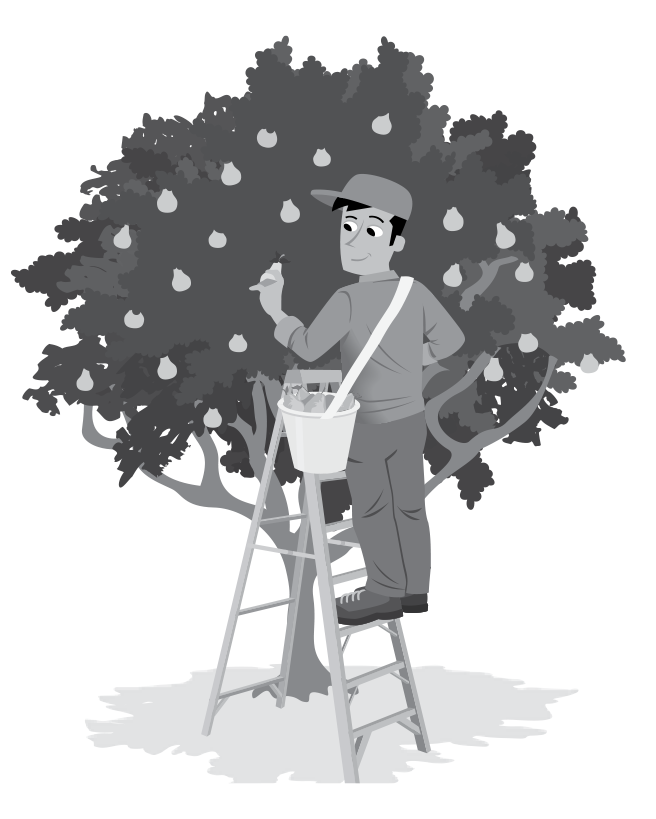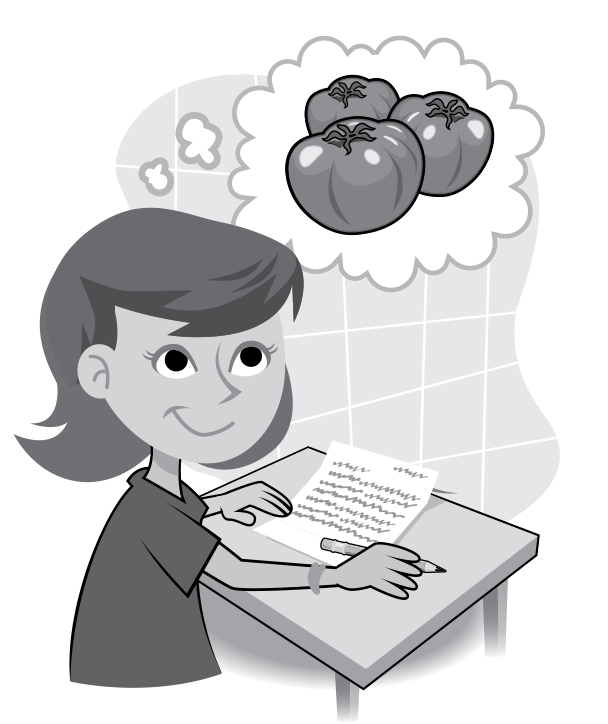Agricultural Literacy Curriculum Matrix
Lesson Plan
My Life as a Fruit or Vegetable
Grade Level
Purpose
Students explore the production and distribution of fresh produce. Grades 3-5
Estimated Time
Materials Needed
For the class:
- Fresh produce resources—books, websites, and articles
- Writing paper
- Pens or pencils
- Blank paper for illustrations
- Construction paper or tagboard
For the teacher:
- Butcher or chart paper
Vocabulary
fruit: the part of a plant that develops from the flower and contains the seeds of the plant
vegetable: any edible part of a plant that does not contain seeds
Background Agricultural Connections
This lesson is part of a series called Fruits and Vegetables for Health, which introduces students to the production, distribution, and nutritional value of fresh produce. Students will gain knowledge in geography, language arts, science, and math as they learn about the process through which fruits and vegetables are transported from California farms to kitchen tables. Other related lessons in this series include:
- Making MyPlate YourPlate
- California Crops: From the Farm to the Table
- Nutritional Value of Fresh Produce
- The Chemistry of Fruits and Vegetables
- My Life as a Fruit or Vegetable
Cross-curricular writing is an integral part of every student’s language arts education. When opportunities for writing in social studies, science, physical education, and math increase, the development of the whole student is expanded. A study of the vast produce industry in California can occur as students write fictional stories about the production and distribution of fresh fruits and vegetables. The writing process will include brainstorming, writing rough drafts, peer editing, illustrating, and publishing final copies of student work.
Engage
- To introduce the lesson, read aloud a winning Imagine this... story that highlights the life of a fruit or vegetable.
- Explain to students that the goal of this activity is for each student to write a fictional, creative story about life as a fruit or vegetable. Each story should outline the life of one fruit or vegetable from the farm to the table.
Explore and Explain
- Brainstorming. As a class, generate a list of fruits and vegetables. Also, brainstorm a list of questions that students will need to answer as they write their story about the production and development of a specific fresh produce item. Questions that students answer in their stories may include:
 From where did I originate?
From where did I originate?- What is my biological classification?
- To what other plants am I related?
- How am I planted?
- Where am I grown and why?
- How am I grown?
- What do I look like growing on the plant?
- How am I harvested?
- How am I transported?
- What health benefits do I offer?
- What potential problems could I cause, if any?
- How am I stored?
- How am I prepared/cooked?
- Select a theme. Ask students to select one fruit or vegetable that will be the main character or theme of their stories. Each student should write about a different fruit or vegetable. Avoid duplicate produce items.
- Write a rough draft. Using resources compiled by you and your students, or the commodity reports from the lesson California Crops: From the Farm to the Table, and the list of questions brainstormed by the class. Have each student write a story about the life of the fruit or vegetable. The story should be written in the first person narrative, with the fruit or vegetable telling the story.
- Peer editing. Have students edit each other’s work. Explain to students that this is an important step in the writing process and should be taken very seriously. (Students could be assessed on the editing as well as the writing part of the lesson.) Assign each student a classmate’s rough draft. Tell students to edit for the following:
 Proper punctuation
Proper punctuation- Content
- Spelling
- Proper sequence (from farm to table)
- Accuracy of facts
- Rewrite a final version. Have students write final versions of their stories. Ideally, the final versions will include illustrations of each phase of the fruit or vegetable’s growth, development, and distribution. Encourage students to illustrate as much as possible. Advise students to include a title page and verso which includes publisher, copyright, etc. Other requirements should be discussed before the final writing phase.
- Sharing. Have students share their stories with classmates, family, friends, and anyone else who might be interested.
Elaborate
-
Have students make a farm-to-table flow chart for their fruit or vegetable.
-
Have students create unique hard covers for their books. Perhaps they could be in the shape of the fruit or vegetable, or a product made from the produce item.
-
Have students read their stories to primary students.
-
California teachers, encourage students to enter their stories in Imagine this... Story Writing Contest. Visit website for more information.
-
Have students make a stick or bag puppet of their fruit or vegetable and share their story through the puppet.
-
Place the published collection of stories on display in the school library or produce section of the local market.
Evaluate
After conducting these activities, review and summarize the following key concepts:
- Fruits and vegetables are part of a healthy diet. They provide many nutrients.
- Fruits and vegetables are grown on farms. They come from trees, vines, and various plants.
Acknowledgements
This lesson was originally developed in 1996 through a partnership between the Fresh Produce and Floral Council, the California Farm Bureau Federation, and the California Foundation for Agriculture in the Classroom. Fruits and Vegetables for Health was updated in 2012 in partnership with the California Department of Public Health’s Network for a Healthy California with funding from USDA SNAP, known in California as CalFresh (formerly Food Stamps). Funding for 2017 updates were provided through a California Agriculture Special Interest License Plate grant (CalAgPlate) that supports agricultural education, agricultural career training, and agricultural leadership development.
Original Authors: Brenda Byers and Priscilla Naworski
Executive Director: Judy Culbertson
Illustrator: Erik Davison
Layout and Design: Nina Danner
Special thanks to Harvest of the Month
Recommended Companion Resources
- A Fruit is a Suitcase for Seeds
- A Seedy Fruit Challenge
- Dig In! Posters
- Follow That Food: Carrot Edition
- From the Field to the Farmers Market
- Fruit Bowl
- How to Grow a Monster
- Las calabacitas de Zora (Spanish Edition)
- Ode to an Onion
- Oliver's Fruit Salad
- Plants Feed Me
- Producepedia
- Stinky and Stringy: Stem & Bulb Vegetables (Plants We Eat)
- The Fruits We Eat
- The Very Oldest Pear Tree
- Tree Fruits Flowchart
- Try It! How Frieda Caplan Changed the Way We Eat
- What's in the Garden?
- When Grandma Gives You a Lemon Tree
- Zora's Zucchini
Author
Organization
| We welcome your feedback! If you have a question about this lesson or would like to report a broken link, please send us an email at [email protected]. If you have used this lesson and are willing to share your experience, we will provide you with a coupon code for 10% off your next purchase at AgClassroomStore. |
